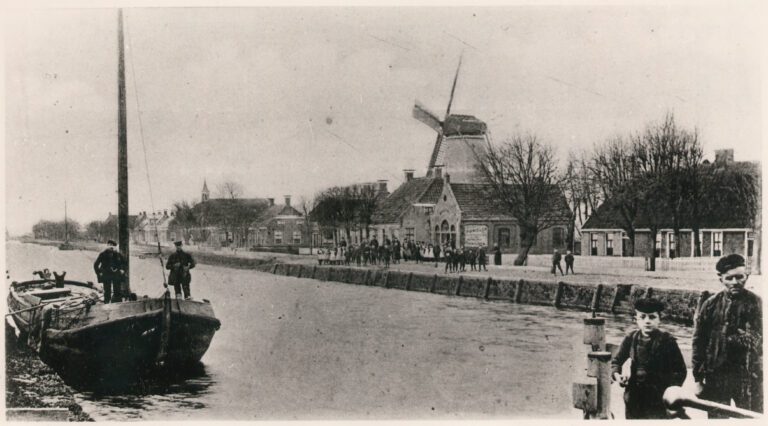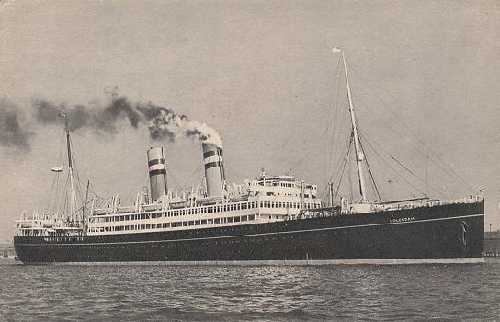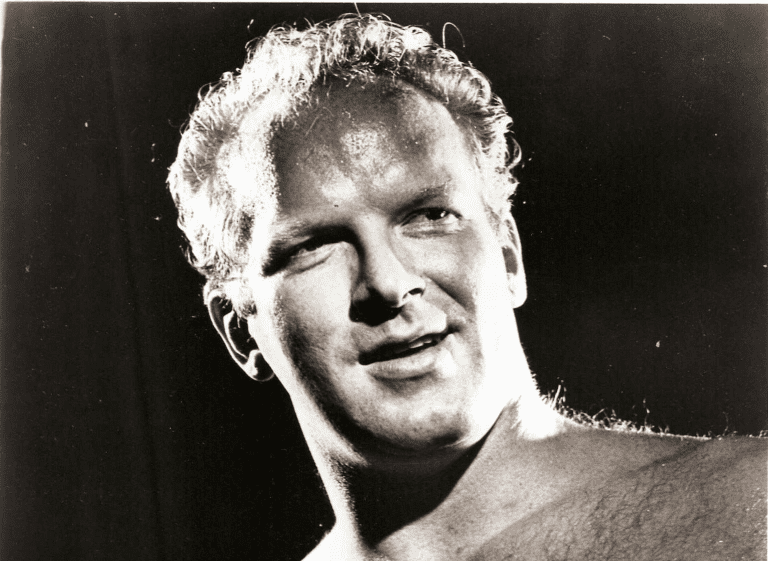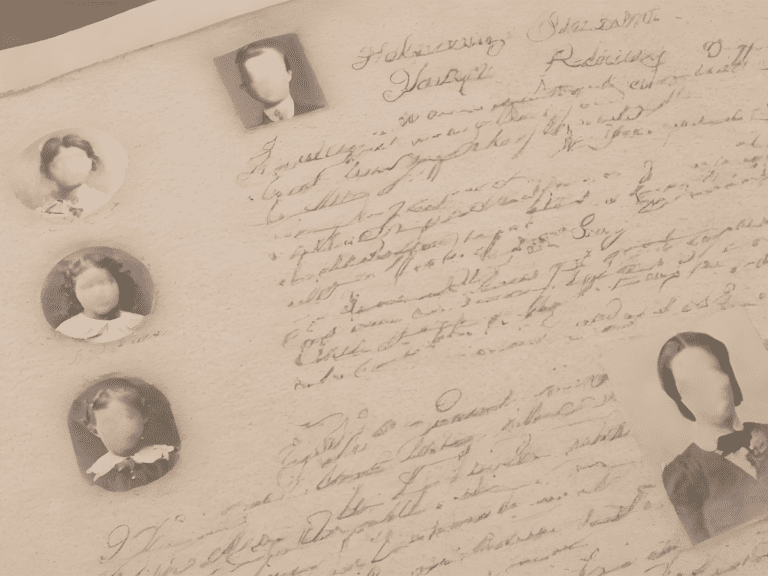Below follows a description of a part of the life of his grandparents Geert Jacobs Snip, born on 20-10-1870 in Enumatil and married to Froukje Boerema, born on 12-06-1870 in Sebaldeburen, as well as the early years of the writer of this text in Hoogkerk.
Grandpa Snip
My grandfather Geert was sent “out to farm” at the age of 11 by his father Jacob, who was a widower left behind with his children Geert and Joukje, who later married Willem Jongsma. Grandpa Geert managed to become skilled in caring for horses on the farm and later in the livery stable (coach house). He, among other things, made visits with the doctor in the area around Buitenpost.
In the evenings, he attended school with the headmaster and, after two years, successfully obtained the diploma for “komies” (customs officer or tax collector). This, along with his years of experience with horses, earned him the wonderful job of coachman and house servant at the Fraeylemaborg in Slochteren, where he worked from around 1898 until 1918.
However, on April 27, 1918, the family moved to Adorp, north of Groningen, and in 1921 they moved to Hoogkerk.
My grandfather became the new sexton of the Dutch Reformed Church and would later become the caretaker of the town hall under the then-mayor G. van Barneveld. At that time, a sexton’s or caretaker’s residence was not available. Grandpa and grandma were given temporary accommodation in the closed choir section at the rear of the church. Master Polée still lived in the old schoolhouse to the left of the entrance to the church. After that house was demolished, a retail space was built there (family Roorda). During that period, my grandparents were able to move into the house on the left side of the town hall. From there, you had a beautiful view of the Hoendiep with its old swing bridge and the still-present Elmersmaborg.
I have fond memories of the time I spent regularly with my grandparents. My first independent visit was when I was about three years old (I was later told this). I had escaped from our house, which also served as a tobacconist’s shop at Zuiderweg 58, and set off for my grandparents’ house. Fortunately, Mr. Roorda saw me wandering over the swing bridge and picked me up, delivering me to my destination. In those days, the water was more dangerous than the traffic.
I called my grandpa “Opa Bin Bam” because of the melodious bell of the Dutch Reformed Church, which he had to ring at funerals and Sunday church services. Sometimes he would hang me on the swinging bell ropes, and I would go up and down like a yo-yo. There was a beautiful garden behind the church, where there was no association building at the time; this was my favorite playground. Chickens roamed freely, and grandpa would give me rides in his wheelbarrow. The salary of a sexton and caretaker was indeed a certainty, especially during the years of crisis, but not a great deal. That’s why grandpa had several side jobs at that time: president of the burial society, hay fire inspector, maintenance of tombstones and gardens. The man was always busy. He was also a born storyteller, like many grandparents of the generation from the nineteenth century when there were no modern means of communication. That’s why fortunately many memories have been preserved.
Memories of the Second Wold War
From the Second World War, which became a reality in the early morning of May 10, 1940, in the Netherlands as well, I still remember a few things. On the Zuiderweg, there were a number of trucks requisitioned by the Dutch army, which had to transport Dutch soldiers towards the Afsluitdijk. The large tree in front of our house was quite damaged then, and that could still be seen years later. The convoy had barely reached the province of Friesland when the German army was already approaching Groningen, and shortly thereafter entered Hoogkerk with a lot of modern war material but also with many horses. The high bridge over the Aduarderdiep (at the location of the current Tichelwerkbrug) was blown up, with partial success. It made an enormous blast. However, it did not hinder the German advance.
For us as schoolchildren, all of this was still exciting. That changed a few years later when we were quite regularly woken up at night by our parents because of the passing bombers on their way to Germany. These bombers were intensively shot at by the many German anti-aircraft guns around Groningen.
Even the youth realized that the Germans were not friends. I first had a friend in the neighborhood who was a member of the Hitler Youth and went to Groningen once a week with his mother for a meeting of this club. I had a heated argument with him once because he kept praising the Germans sky-high, and I did the opposite, so our friendship ended immediately.
Written by G.J. Snip, born 17-12-1932 at Hoogkerk. With thanks to Geert.






